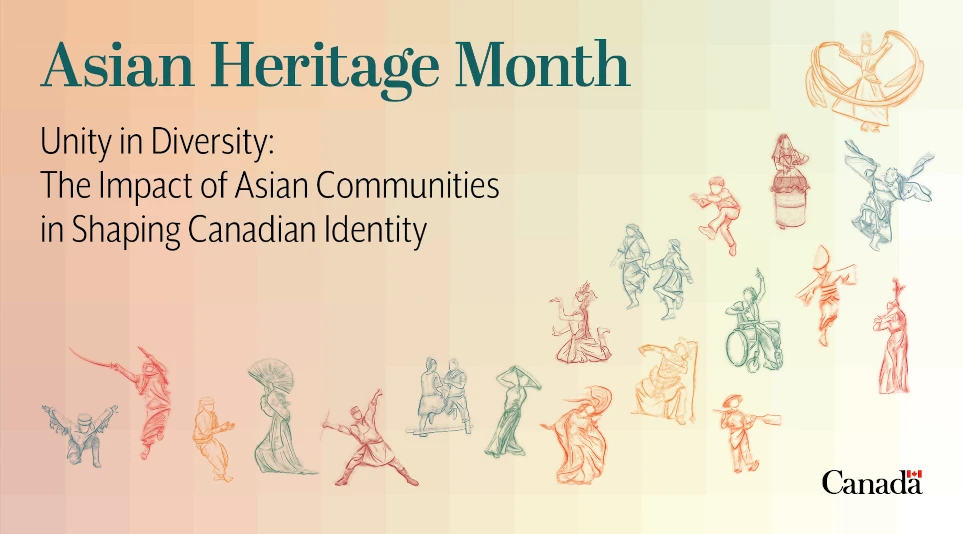
May 1, 2002
Asian Heritage Month Designated in Canada
Since May 1, 2002, Canada has officially designated May as Asian Heritage Month, following a motion by Senator Vivienne Poy, herself a prominent Chinese Canadian. This national initiative provides an annual opportunity to recognize and celebrate the immense contributions of Asian Canadians, including Chinese Canadians, to the country's fabric. Throughout the month, events highlight the diverse histories, cultures, and experiences of people from across Asia and the diaspora. For Chinese Canadians, it's a time to reflect on their long history in Canada, from railway workers to community leaders, acknowledging both hardships like the Head Tax and Exclusion Act, and progress in building a multicultural nation, fostering greater understanding and intercultural dialogue.
The term 'Asian Canadian' itself gained prominence in the 1970s, partly inspired by Asian American activism, with early advocacy groups forming at institutions like the University of British Columbia. A significant milestone in fostering a collective voice was the 1978 launch of Asianadian magazine in Toronto. This publication became the first in Canada to provide a dedicated forum for Asian Canadians to articulate their experiences as visible minorities, contributing to a growing pan-Asian consciousness.
State Equity Effort
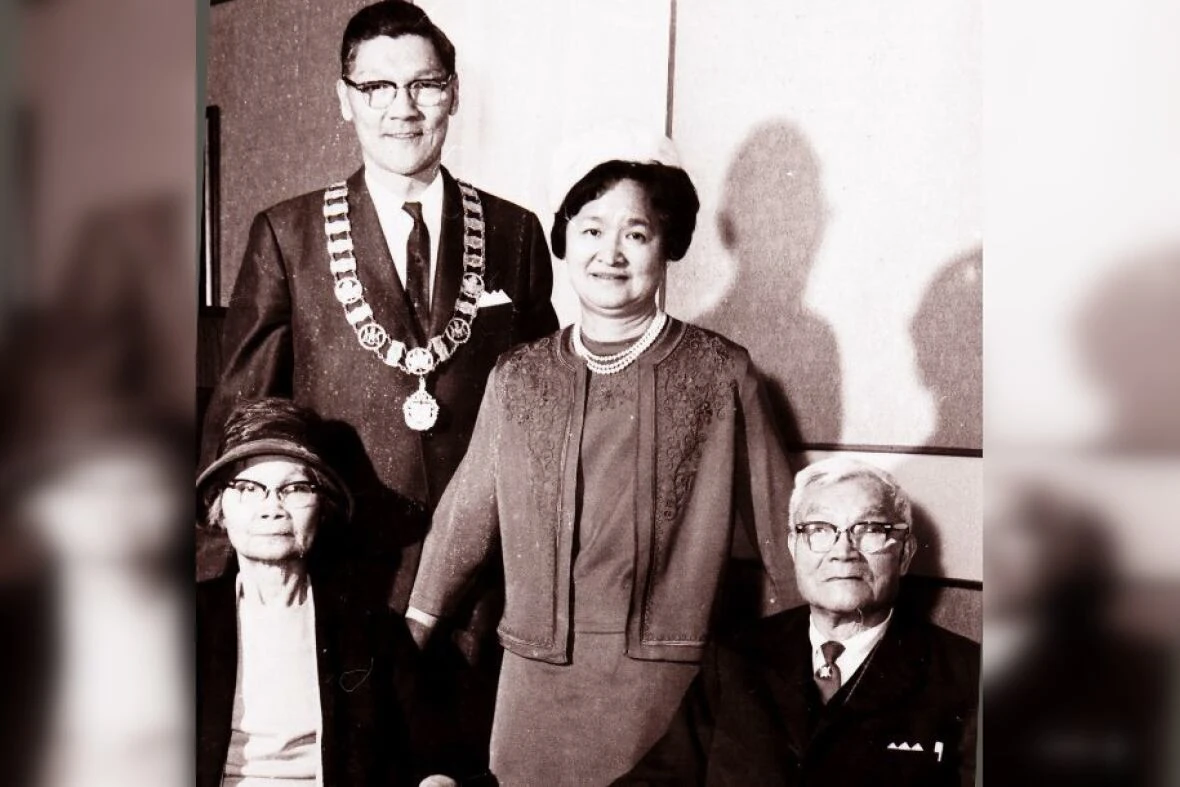
May 4, 1914
Peter Wing: First Chinese Canadian Mayor & Order of Canada Recipient
Born May 4, 1914, in Kamloops, British Columbia, Peter Wing (吳榮添) grew up in a family that ran a local grocery store. He became Canada's first Chinese Canadian mayor and his achievements have inspired future generations. On January 14, 1976, Peter Wing and Jean B. Lumb (林黃彩珍) were both awarded the Order of Canada, becoming the first Chinese Canadians to receive this honour. Wing attended school in Kamloops and helped with his family's business. He later became deeply involved in civic affairs. In 1966, he was elected mayor of Kamloops as an independent candidate—becoming Canada's first Chinese Canadian mayor and one of North America's earliest Chinese political leaders. During his term, he led the way in exemplifying to Chinese-Canadians full participation in the public life of his community and Province. He was also known for promoting civic unity, helping heal the city's divisiveness after amalgamation. After leaving office, Wing remained actively involved with the Red Cross, St. John Ambulance, local chambers of commerce, and cultural centres.
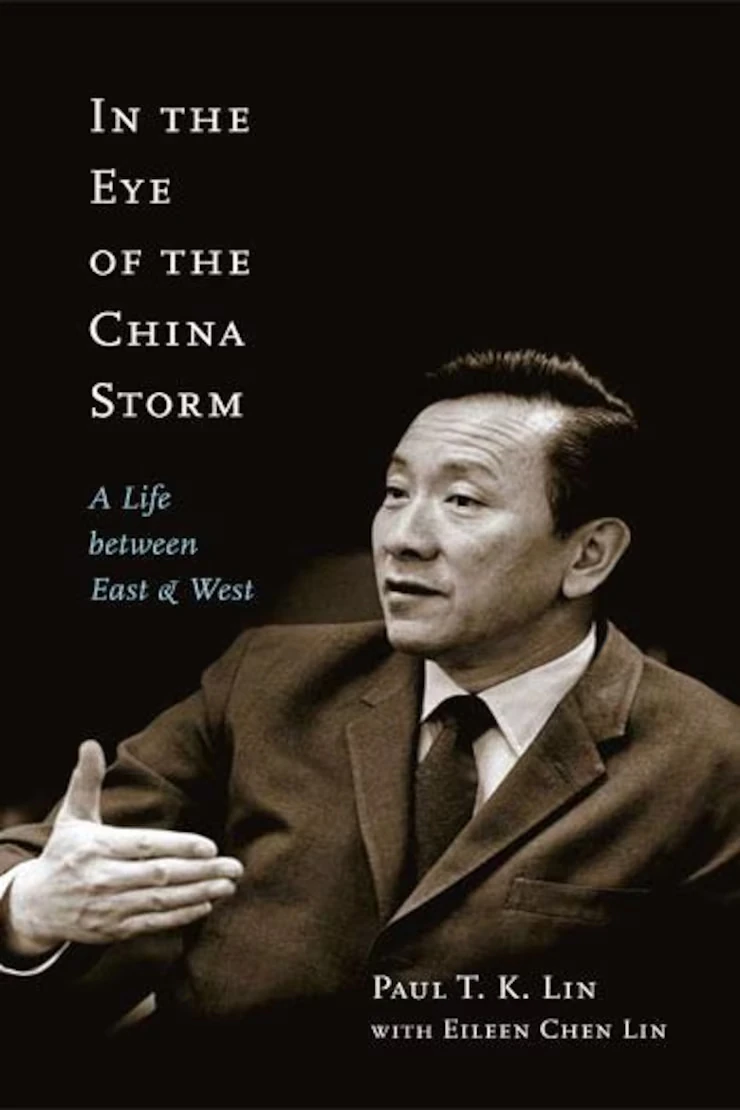
May 6, 1998
Paul Lin Ta-Kuang: Academic, Peace Activist & Canada-China Relations Pioneer
May 6, 1998, Paul Lin Ta-Kuang (林達光, 1920-2004) was awarded the Order of Canada. A Vancouver-born academic and peace activist, he was a leading figure in developing Canada-China ties, encouraging East-West cooperation based on equality and mutual respect. His unique experiences in China provided insights that helped facilitate diplomatic engagement between Canada and China in the 1970s, contributing to strengthening these relationships. He earned his M.A. from the Fletcher School of Law and Diplomacy, co-administered by Harvard and Tufts Universities. He lived in China in the 1950s before teaching at McGill University, where he founded its East Asian Studies. Despite his contributions, the Lin family faced racial discrimination, and Paul Lin was treated as a communist sympathizer and national security threat under McCarthyism's influence. His work, however, left a lasting legacy in Canadian international relations.

May 13, 1788
First Chinese Workers Arrive on Vancouver Island
May 13, 1788, approximately 50-70 Chinese workers, primarily craftsmen, arrived on Vancouver Island with British fur trader Captain John Meares. This marks one of the earliest documented instances of Chinese presence in what is now Canada. These artisans were brought to Nootka Sound to build a trading post and a schooner. While their initial stay was temporary, this event signifies the very beginning of a long and complex history of Chinese contributions to the development of British Columbia and Canada. It predates the major waves of immigration for gold rushes and railway construction, highlighting an early, often overlooked, chapter in the story of Chinese Canadians and their foundational role in the region's early economic activities.
Immigration
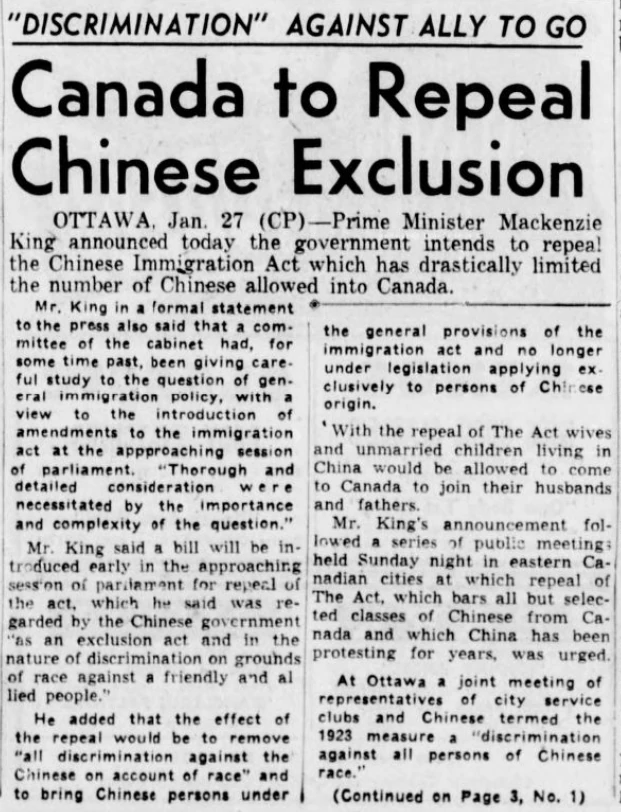
May 14, 1947
Federal Chinese Exclusion Act Repealed
May 14, 1947, Canada repealed the Chinese Immigration Act of 1923, known as the Chinese Exclusion Act. This discriminatory law had barred almost all Chinese immigration for 24 years, devastating the Chinese Canadian community by preventing family reunification and growth. Its repeal was a monumental step for Chinese Canadians, influenced by Canada's post-World War II human rights commitments and advocacy by community leaders and allies. Though discriminatory quotas persisted until 1967, the repeal marked the end of an era of legislated exclusion. It allowed families to slowly reunite and laid the foundation for a more equitable immigration system, profoundly impacting the future development and integration of the Chinese Canadian community.
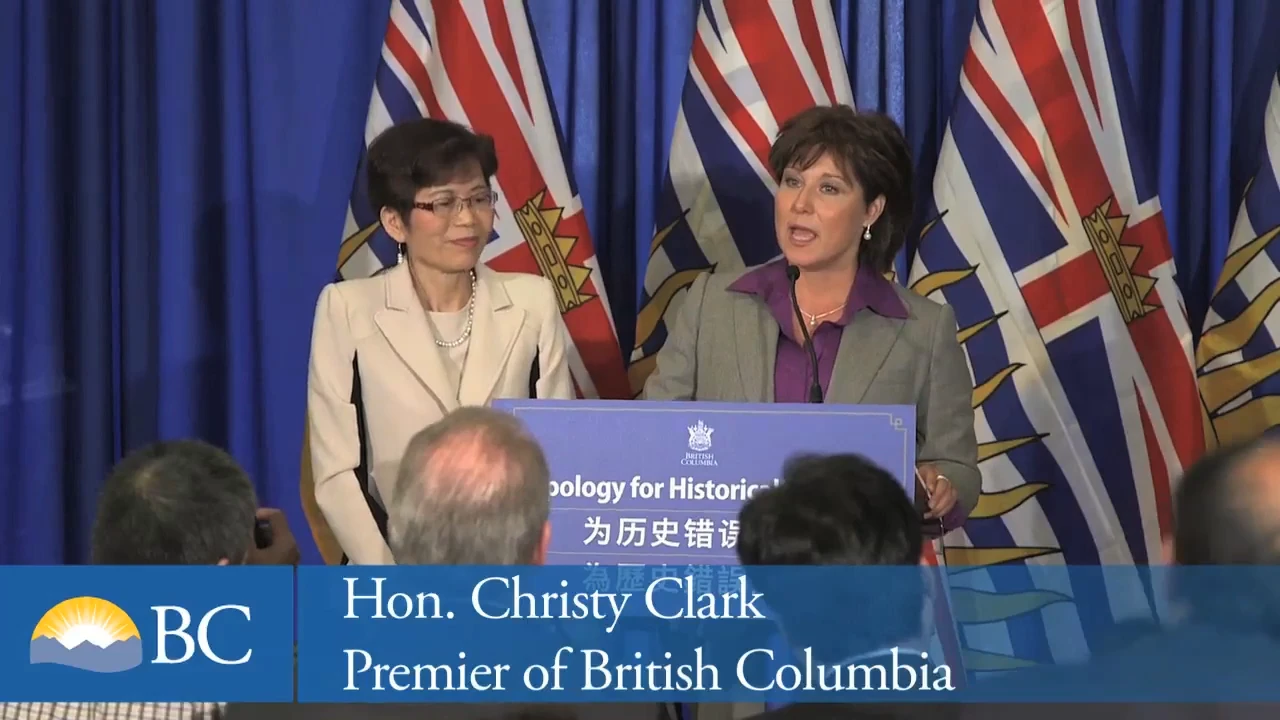
May 15, 2014
BC Apology to Chinese Canadians
May 15, 2014, the British Columbia government issued a formal apology to Chinese Canadians for historical wrongs. This acknowledged over 160 discriminatory provincial laws and policies targeting Chinese immigrants and their descendants, including the head tax, and restrictions on rights and employment. For Chinese Canadians, this apology was a significant moment of recognition for the profound suffering and injustice endured by their ancestors and families. It aimed to promote a more inclusive understanding of B.C.'s history, acknowledging the community's resilience and contributions despite systemic discrimination. The apology included commitments to legacy initiatives to ensure these historical wrongs are remembered and understood by future generations.
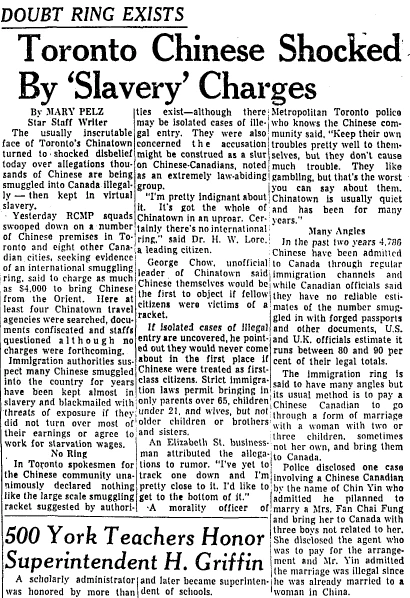
May 24, 1960
RCMP Raids on Chinese Organizations: Amnesty Program
May 24, 1960: RCMP raided Chinese premises across Canada, investigating alleged illegal immigration and the use of false identities by "paper sons". This an investigation in collaboration with the Hong Kong police. This controversial operation targeted individuals believed to have entered Canada using fraudulent documents. The raids caused significant fear and disruption within Chinese Canadian communities. In response to the findings and the complex situation of undocumented individuals, the Canadian government introduced the Chinese Adjustment Statement Program later in 1960. This amnesty program allowed those who had entered illegally to declare their true identities and regularize their status without penalty. By July 1970, approximately 11,569 individuals had successfully adjusted their status through this initiative.
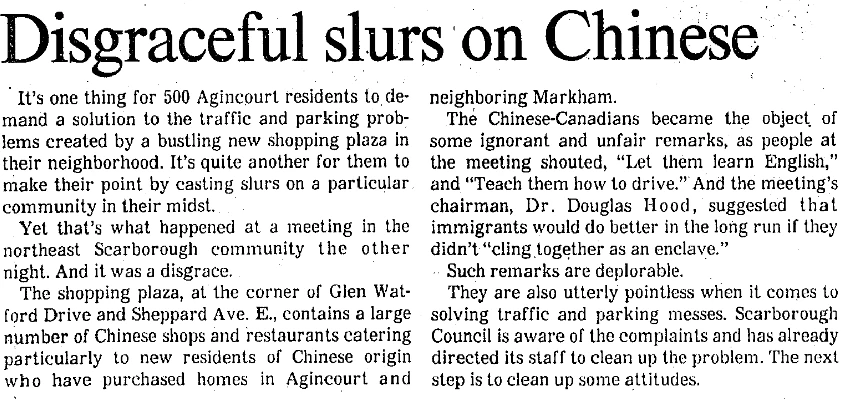
May 28, 1984
Scarborough Dragon Centre Controversy: Anti-Chinese Racism
On May 28, 1984, a community meeting was convened in Scarborough's Agincourt neighbourhood to address traffic and parking concerns stemming from the newly opened Dragon Centre (慶龍中心)—the first indoor Chinese-themed mall in North America. The meeting devolved into racial hostility, with attendees expressing anti-Chinese sentiments. Dragon Centre had rapidly become a cultural and commercial hub for the growing Chinese-Canadian population in the area resulting from an influx of immigrants from Hong Kong. This incident highlighted underlying racial tensions, whereby some residents voiced discomfort with the demographic shift and the presence of the Chinese in the community. Despite clear evidence of racism, local government responses were criticized for lacking acknowledgment or decisive action. In the years that followed, these tensions persisted, exemplified by the distribution of hate literature targeting Chinese Canadians in Scarborough into the 1990s, underscoring ongoing challenges to acceptance and belonging for the community.
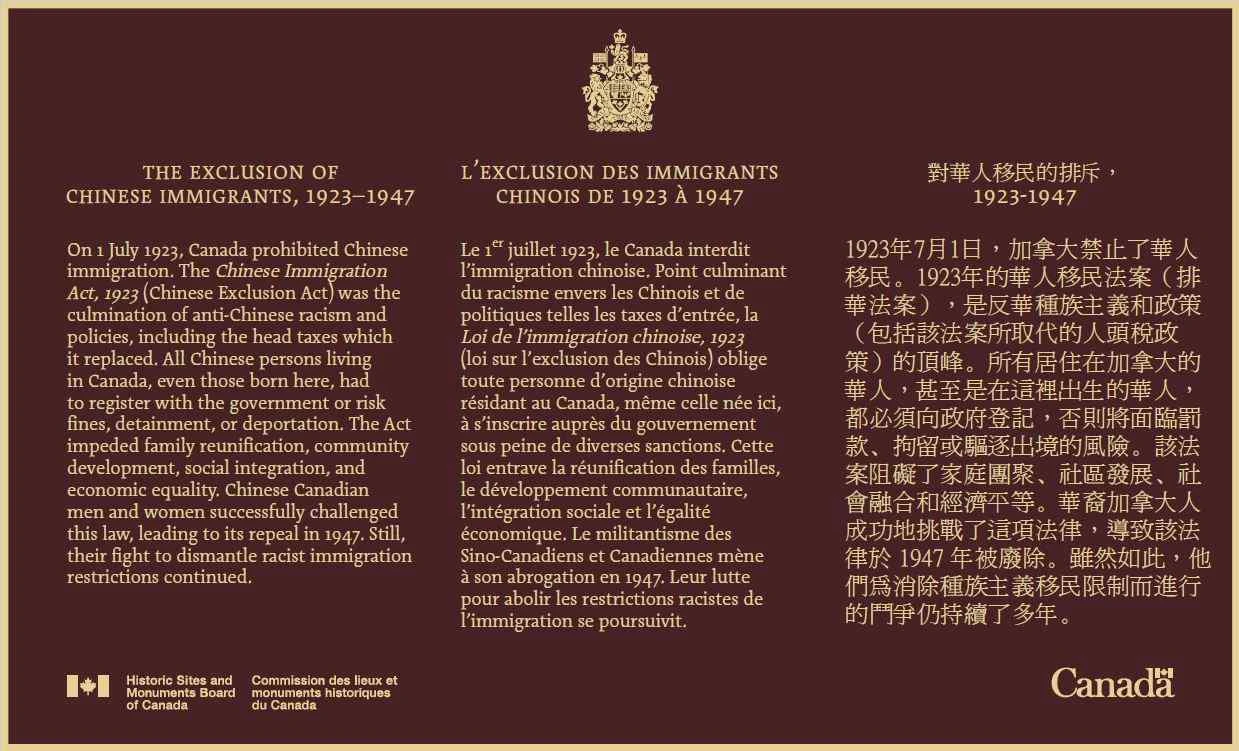
May 30, 2023
Exclusion Act Recognized as Nationally Historic Event
May 30, 2023, Canada recognized the Exclusion of Chinese Immigrants (1923-1947) as an event of national historic significance. This formal acknowledgment by Parks Canada and the Historic Sites and Monuments Board of Canada underscores the profound injustice of the legislation, which virtually halted Chinese immigration for 24 years, deeply impacting families and communities. For Chinese Canadians, this recognition is a crucial step in ensuring this discriminatory chapter is remembered and understood, honouring the resilience of those who endured its devastating effects. It reinforces the commitment to learn from the past and educate future generations about systemic discrimination and the importance of an inclusive society.